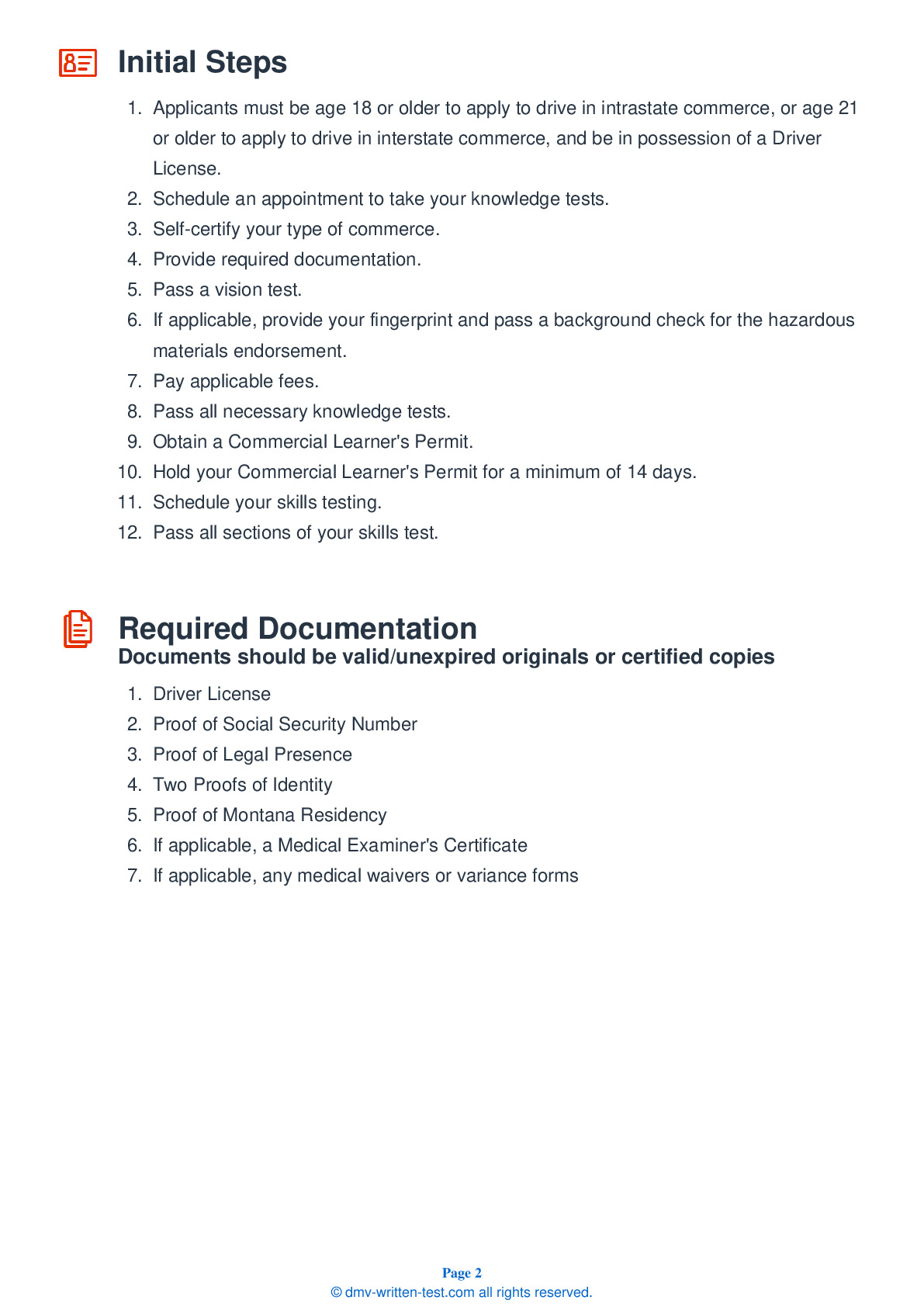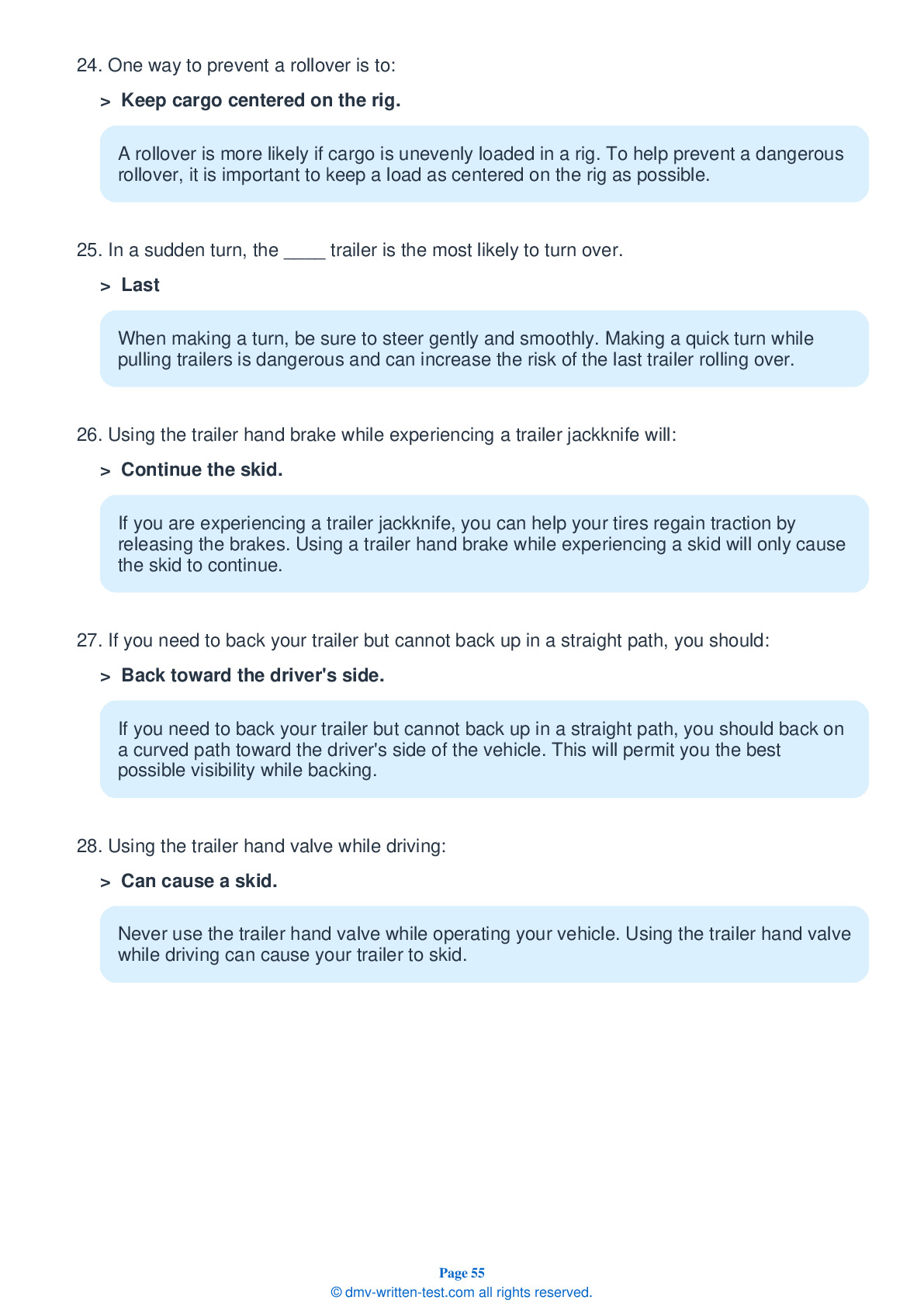Air Brakes
This endorsement is required for driving a vehicle with air brakes. To receive this endorsement, applicants must pass a written test. The test consists of 25 multiple choice questions. Each question has three or four answer choices. To pass, the applicant must answer at least 20 questions correctly. Test questions come from the Montana Commercial Driver License Manual. Questions come from the chapter covering: Air Brakes. The Air Brakes endorsement may be used with the Class A, B or C CDL.
Number of Question
Passing Score
19. Brake linings should be:
Explanation
Brake linings should not be loose or soaked with oil or grease. They shouldn't be dangerously thin.
20. What is often found in compressed air?
Explanation
Compressed air in an air brake system usually contains a certain amount of water and compressor oil. The water and oil can damage the brakes if left to accumulate in the system. Tanks must be drained regularly to remove this build-up.
21. How is water and compressor oil removed from the bottom of an air storage tank?
Explanation
Water and compressor oil are removed from air storage tanks through a drain valve. The water and oil can damage the brakes if left to accumulate in the system. Manually operated tanks must be drained every day to remove this build-up.
22. If the spring brakes are on, you should:
Explanation
You should not apply the brake pedal if the spring brakes are activated. The brakes could be damaged if they are subjected to the force of air pressure and the springs at the same time.
23. The application pressure gauge:
Explanation
In an air brake system, the application pressure gauge shows how much air pressure is being applied to the brakes. Not all vehicles with an air brake system have this gauge.
24. Front brake limiting valves were intended to:
Explanation
Some older vehicles with air brakes have front brake limiting valves. These valves were intended to reduce the risk of front wheels skidding. However, research has shown that such devices are unnecessary, so they should be left in the "normal" position.
25. If your tractor is equipped with ABS but your trailer is not, the ABS:
Explanation




